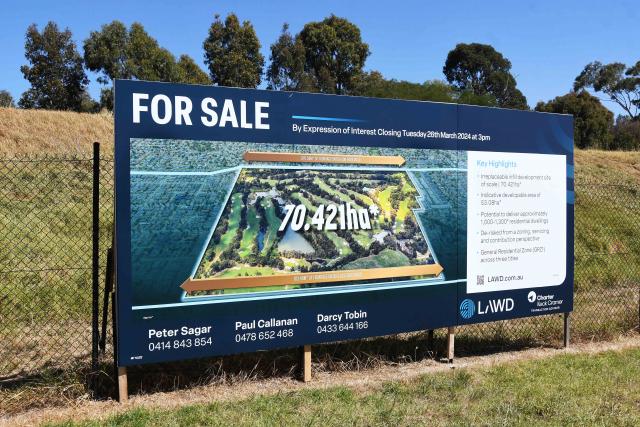Objections from local residents were unable to stop the endorsement of the Hampton Park Hill Development Plan by the City of Casey, which said it “must comply“ with State Government plans for the land.
The Hampton Park Hill Development Plan was endorsed at a council meeting on Tuesday 18 July.
While the council believes the enforcement of the Development Plan will “facilitate the future development of land“ around the landfill site, “for waste and resource recovery activities, regional public open spaces and light industrial activities“, residents fear the endorsement will perpetuate their suffering as the tip continues to cause odour headaches.
Many public submissions for the meeting voiced concerns over the council’s decision to endorse the plan ahead of the new EPA buffer zone guidelines due to enforce separation distance changes later this year.
The new guidelines would increase the buffer zone around the landfill site from the current distance of 500 metres, to between 1.5 and 2 kilometres.
Raymond Dalli and Troy Van Gorp were among those expressing agitation over the council “rushing“ to “rezone the tip“.
“EPA’s two new draft guidelines on separation distances and landfill buffers will support informed land use decisions for and around industry and landfills,“ Mr Van Gorp said.
“The proposed guidelines will support planning authorities, responsible authorities, industry, developers, the community and EPA.
“This means planning decision makers will be required to consider the guidelines as relevant.“
Mr Dalli questioned why the “integral“ changes from the EPA has not resulted in council “deferring the adoption“ of the plan.
Kim Murphy also emphasises the EPA buffer zone changes as having “fundamental impacts“ on the site.
According to the council, the EPA did not recommend delaying adoption of the plan based on buffer guidelines to be introduced later this year.
“The Development Plan has been prepared in consultation with the Environment Protection Authority (EPA) and the Department of Transport and Planning (DTP),“ Ms Duff said.
“The EPA have provided input into drafting and buffer maps contained in the Development Plan and both the EPA and DTP have not recommended the project be put on hold due to EPAs new draft guidelines that suggest a 1.5km – 2km landfill buffer.
“The final outcome of the EPAs new draft guidelines is unknown, and until the guidelines are legislated, the Development Plan must rely on the current 500 metre buffer and the provisions of the Casey Planning Scheme.“
However an EPA spokesperson said “timing and implementation of the development plan“ are “not matters for EPA“.
“EPA Victoria provided advice to Council on environmental risks to be considered for the Hampton Park Hill development plan,“ they said.
“Council continues to engage with EPA on the development plan.”
According to resident Ruth Dalli, the council’s proposal neglects “the concerns of residents residing in close proximity“.
“Given the introduction of a Development Overlay and the potential for a large-scale commercial waste and resource recovery activity within a densely populated residential zone, shouldn’t the council acknowledge this as a significant constraint with potential implications for the welfare and well-being of residents,“ she said.
However, Ms Duff said on 19 July the council will be “delaying this aspect“ until “further work and investigation has been undertaken“ to determine the merit of applying the Buffer Area Overlay over residential land within the existing 500 metre buffer for the landfill.
Lynbrook Residents Association Leader Viv Paine said the council’s decision to endorse the plan is “undemocratic“.
“This decision by non-elected Administrators who never have to face a ballot box dashes the hopes of Casey residents who were promised time and again that once full the landfill would revert to public open space,“ she said.
“Long suffering residents who have put up with endless rubbish trucks and putrid odours are now a step closer to facing a huge Waste Transfer Facility at the Tip and an unwanted Buffer Overlay that will devalue their property.
“LRA will continue to push for the Waste Transfer Facility to be built elsewhere well away from family homes.“
During the meeting, council administrators responded to numerous questions from local residents in regards to the Development Plan.
Queries included Veolia’s track record at the Hampton Park landfill, the council’s role in perpetuating the facility against the wishes of the residents, the new Environmental Protection Authority buffer zone guidelines and the role of diversity in council communications regarding the issue.
“How can council with good conscience consider the erection of a waste transfer facility when it will be managed by Veolia, given their horrible track record of managing the Hampton Park tip,“ Ryan Halket said.
“The community feedback is obvious, we do not want this facility.
“Why does it feel like council is merely entertaining us in the process and not actually listening and taking action on our feedback.“
Amanda Haslam likewise questioned why the council chose to support the Development Plan.
“Why does council support the Hampton Park Hill plan when there was such a significant and overwhelming rejection of the plan by the local residents,“ she said.
“None of you were elected by any of us therefore the input by residents should have had much more weight placed upon it, and was completely ignored.
“You didn’t even accurately portray or respond to our original questions as they were posed.“
City of Casey Acting Manager of Planning and Building Kathryn Seirlis submitted a response, which was offered by Administrator Noelene Duff.
“While we understand these matters are important to residents, they are beyond the scope of the Development plan,“ Ms Duff said.
“All submissions received have been considered and responded to.
“Changes have been made to the Hampton Park Hill Development Plan as a result of matters raised in the submissions.“
Both Ms Seirlis and the administrators acknowledged the “considerable public interest“ in the Development Plan, but maintain many of the issues raised by residents are outside the purview of the plan.
“Not all of the concerns raised in submissions could be accommodated through changes to the Development Plan,“ Ms Duff said, reading [NAMES] submitted response.
Apprehension was expressed over the council’s efforts in engaging with Casey’s diverse community throughout the Development Plan process.
The Australian Bureau of Statistics 2021 Census revealed 46.5 per cent of Casey residents were born in a country outside of Australia, with India, Sri Lanka and Afghanistan being top places of birth for many Casey locals.
Ms Murphy questioned whether council had effectively communicated information regarding the plan to the “deeply diverse demographic“ affected by the site and outcome of the plan.
Ms Seirlis responded with the public exhibition dates for the Development Plan, alongside other efforts by council to showcase the plan to the community.
“Notice of the Development was placed in the local newspapers on four occasions and several public consultation sessions were held during the exhibition period.
“Interested persons could and still can access free translation and interpreting services that are advertised on Council’s webpage.“
Ms Duff said the Development Plan must be consistent with the “strategic directions“ of the State Government.
“The State Government has identified the land as one of 22 hubs of State importance to service the needs of the region,“ she said.
“We acknowledge concerns, however due to Council’s planning role in the process and needing to not conflict with State Government policy, we were unable to consider them as part of this process.“
The Plan will inevitably influence the future character of the Hampton Park area, but the council believes these impacts will result in “improved urban design outcomes“.
Residents in the area do not share the same hopeful attitude.
“This situation leaves us in a state of uncertainty, questioning the representation of our community,“ the LRA spokesperson wrote.
“We had faith that our elected officials in the first instance and governing authorities would conduct thorough assessments and exercise due diligence and locate an alternative and appropriate site, well away from residents.
“However, the current circumstances have compelled us to reflect on the essence of governance and their duty of care towards the community.“







